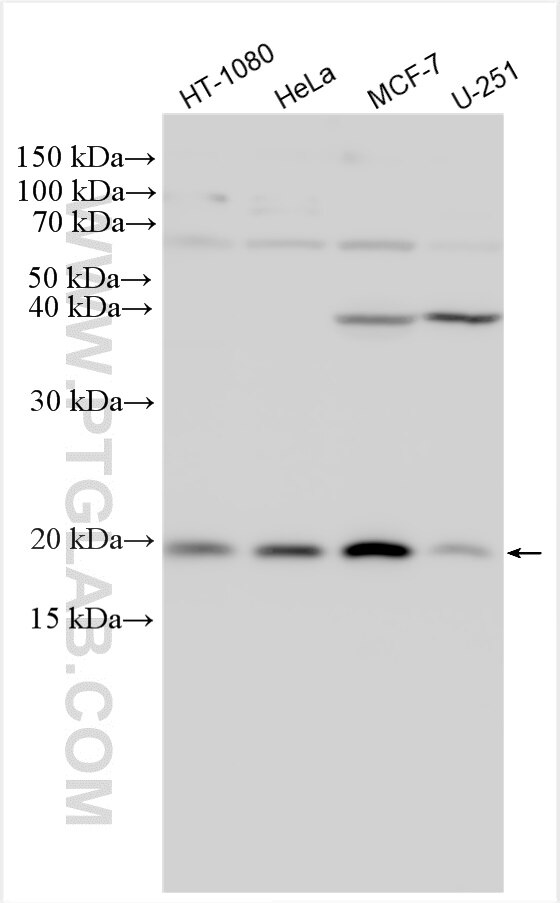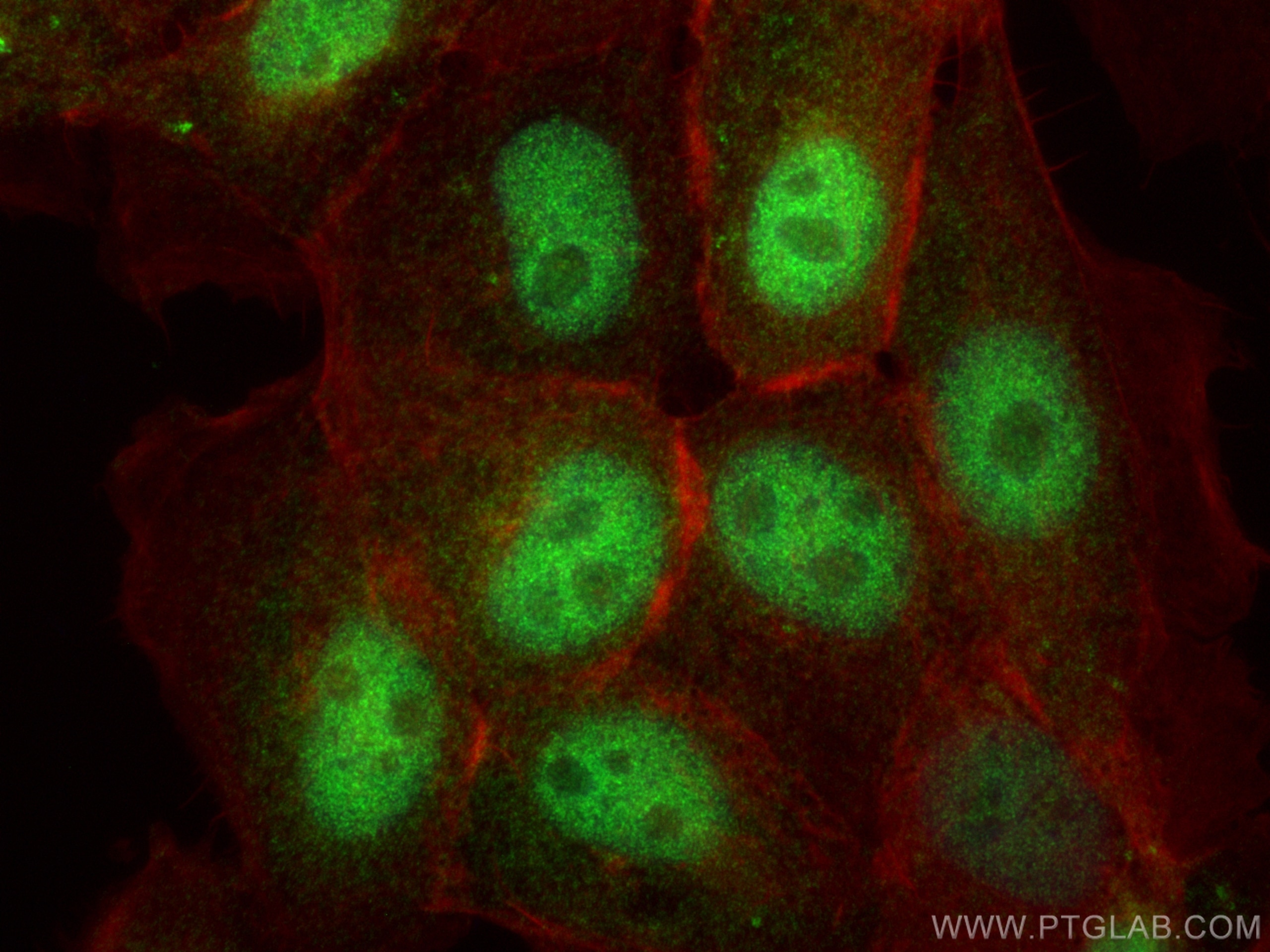Tested Applications
| Positive WB detected in | HT-1080 cells, HeLa cells, MCF-7 cells, U-251 cells |
| Positive IF/ICC detected in | U-251 cells |
Recommended dilution
| Application | Dilution |
|---|---|
| Western Blot (WB) | WB : 1:500-1:1000 |
| Immunofluorescence (IF)/ICC | IF/ICC : 1:200-1:800 |
| It is recommended that this reagent should be titrated in each testing system to obtain optimal results. | |
| Sample-dependent, Check data in validation data gallery. | |
Product Information
30529-1-AP targets C16orf75 in WB, IF/ICC, ELISA applications and shows reactivity with human samples.
| Tested Reactivity | human |
| Host / Isotype | Rabbit / IgG |
| Class | Polyclonal |
| Type | Antibody |
| Immunogen |
CatNo: Ag32880 Product name: Recombinant human C16orf75 protein Source: e coli.-derived, PGEX-4T Tag: GST Domain: 99-147 aa of BC031016 Sequence: GKYVMVMGVVQACSPEPCLQAVKMTDLSDNPIHESMWELEVEDLHRNIP Predict reactive species |
| Full Name | chromosome 16 open reading frame 75 |
| Observed Molecular Weight | 19 kDa |
| GenBank Accession Number | BC031016 |
| Gene Symbol | C16orf75 |
| Gene ID (NCBI) | 116028 |
| RRID | AB_3086351 |
| Conjugate | Unconjugated |
| Form | Liquid |
| Purification Method | Antigen affinity purification |
| UNIPROT ID | Q96E14 |
| Storage Buffer | PBS with 0.02% sodium azide and 50% glycerol, pH 7.3. |
| Storage Conditions | Store at -20°C. Stable for one year after shipment. Aliquoting is unnecessary for -20oC storage. 20ul sizes contain 0.1% BSA. |
Background Information
C16orf75 is also named as BLM-associated protein of 18 kDa (BLAP18), RMI2, hRMI2 and RecQ-mediated genome instability protein 2. C16orf75 is essential component of the RMI complex, a complex that plays an important role in the processing of homologous recombination intermediates. It is required to regulate sister chromatid segregation and to limit DNA crossover. And RMI2 is essential for the stability, localization, and function of BLM, TOP3A, and complexes containing BLM. In the RMI complex, it is required to target BLM to chromatin and stress-induced nuclear foci and mitotic phosphorylation of BLM (PMID: 18923082, PMID: 18923083, PMID: 27977684).
Protocols
| Product Specific Protocols | |
|---|---|
| IF protocol for C16orf75 antibody 30529-1-AP | Download protocol |
| WB protocol for C16orf75 antibody 30529-1-AP | Download protocol |
| Standard Protocols | |
|---|---|
| Click here to view our Standard Protocols |






